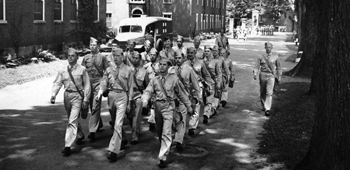Children of the World
Education has been around for centuries, but has changed throughout all this years. In other countries, education is limited for certain people because of different factors. This factors have included gender, age, health, and sadly, money. Before, women were not even able to leave the house, so education was not an option for women a few decades back. Most kids in these countries, who actually want to do something with their life, did not get the chance to do so because of their limitations, leading to ignorance, making their lives even more challenging. In the 1900’s, most kids were being influenced to join the military, especially during World War I. These kids were ignorant on what war actually meant and what other options they had.
Meanwhile kids in other countries fell in the hands of drugs, cartels/gangs, military, and poverty. Poverty has also been a big factor played in this war for education, as it was and still is the main cause of lack of education in the world. Here in the U.S. education is free as long as a person is trying to learn. In other countries that is not the case, education has been costly and many children were forced to work to take care of their parents, siblings, or even themselves. Today’s society adopted the phrase “It is what it is” meaning that everything that you’ve done is irrevocable and cannot be replaced for anything.
In the book Being fair with Kids by Jim Dueck, he stated “It is not what it appears to be. Change can be made that is cost effective and much better for society and millions of individual children. But to address the big issue of relative-age effect, the education establishment must first address one of the major underlying sub issues that contribute to the problem, namely teachers’ resistance to research related to assessment practices.” (Dueck, 2015). Programs around the world are helping those children in need how to read and write so they do not have to struggle in the future. Before this programs were around, lack of education has led kids to join militias, which has had multiple outcomes: as most have disappeared, others have been sold for sex, or even for labor. Statistics show that a child with education is 75% less likely to make bad decisions in their life and their chances of getting job are greater than an illiterate person.
“The Beginning Practice in Child Protection is evident that an effective induction needs to provide a wealth of knowledge, intensive skill development and a clear set of organization values to provide a stable base for the complex dual role being undertaken.” (Barnett, 2006) People started to acknowledge the importance of education and started to bring options to the table as solutions. Nonetheless, it would help a lot if the government decided to help people accomplish these goals. This has not happened as the government has played a major role on whether children get educated or not, especially in poorer countries. Whether the government used their funds for schools, books, transportation or either they used the money for advertising other things, such as war or military campaigns. During the 1700’s, men were forced to work as soon as they turned 8. This continued all until 1760’s, where education grew rapidly around the globe, especially because of the diseases and plagues that spread on Europe on those times. Since then, education did not grow, as is was not considered as important as working in factories or joining the military.
References:
Dueck, Jim (2015) Being Fair with Kids http://reader.eblib.com/%28S%28j3jubn1uk1zsd3dyi2k42zdk%29%29/Reader.aspx?p=1273398&o=738&u=80530689&t=1425537820&h=9F094BD9883942B7DD051C8ECFA0497AB2E36E86&s=33419065&ut=2274&pg=6&r=img&c=-1&pat=n&cms=-1&sd
McPherson, L., & Barnett, M. (2006). Beginning Practice in Child Protection: A Blended Learning Approach. Social Work Education, 25(2), 192-198. Doi: 10.1080/02615470500487838


